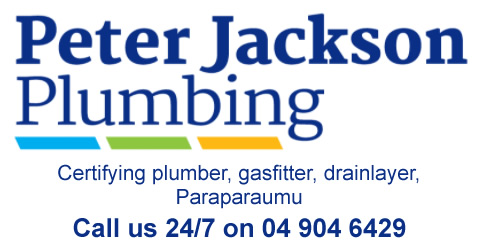
By Hamish Douglas
You do what you’re told you’re supposed to do.
You speak up.
You go to meetings.
You write submissions.
You meet with the mayor.
You meet with your MP.
You meet with council officers.
You present to the Community Board — more than once.
You write letters.
You cost a private plan change.
You coordinate with other residents’ associations.
You support the council’s own submission to Parliament.
You even meet with the Minister of Housing.
You bring 230 people to a public meeting.
You form an incorporated society.
You follow the process. All of it.
And still, the bulldozers roll in.
My family returned to New Zealand in 2020 after ten years in London. We were set to return to Wellington, our hometown, to raise our kids closer to family and give them the childhood we remembered: nature, space, community. But the city we came home to had changed.
Intensification was sweeping across Wellington. Like it or not, if you live in a city now, you’re exposed to the risk of a high-rise or multi-unit block going up next door. That’s the nature of city living, and to a degree, it comes with the territory.
But Waikanae felt different. After a year, we stumbled across it. No connections. No history. But from the moment we arrived in 2021, it felt like home. The gardens, the birdlife, the people, the space for kids to roam, it was what we were looking for.
These places are the hidden gems in New Zealand’s crown, small towns with big heart. And it’s not just us. This is happening in all the gems around the country, and they’re starting to crack under legislation written by people who don’t see them, who may never have even set foot in them.
People are leaving New Zealand in record numbers, but its places like this that draw them home. These are the communities that offer something better, something worth staying for.
Waikanae is known as a peaceful, family-focused place, and that’s what draws people here, along with the properties themselves: established homes, big backyards, tree-lined streets, and a sense of space that’s becoming harder to find elsewhere. But I sometimes wonder how comfortable the wider community really is with what’s happening. It’s easy to tune out until the diggers show up next door, or next to your parents, or your kids. These developments might feel distant, until they don’t. And by then, the damage is done.
The first alarm bell was the high-density development at 10–12 Utauta Street, 39 homes built on the former Gus Evans Nursery site. Ten of those units were pre- purchased by the Government under the Build Ready Development pathway, with a further 25 underwritten. It all happened quickly, with no real community involvement.
And yet, despite all the urgency, those homes still sit empty over a year on. Underwritten by the Government, the only real winner in this situation is the developer. The community is left with a scar, one that permanently altered the landscape and spirit of the neighbourhood.
But it was the proposed development on Ngarara Road, in the heart of the Waikanae Garden Precinct, that truly galvanised the community. Despite unanimous negative feedback from residents, Council dismissed it all and granted consent without notification. That moment made it clear: we weren’t being heard. That was the catalyst for forming the Waikanae Garden Precinct Protection Society.
You would have thought the lessons from Utauta Street would have resonated at Council, especially given Ngarara sits within a designated Special Character Area, noted in the District Plan not just for its housing, but for the gardens and mature trees that form a vital ecological corridor, allowing birdlife to travel between the hills and the sea, as described in the Council’s own Boffa Miskell report. But again, that insight was ignored. The community was bypassed. And the Precinct was left exposed.
There’s also a deeper irony in how these developments play out. They’re pitched as a solution to affordability, but the moment they get the green light, the land value spikes. The homes that go up are sold at a premium, and often not to the very people they’re supposedly being built for. In chasing yield, developers reshape the character of the neighbourhood and make it less accessible to the very workers and families we’re told it’s meant to serve.
We’re told, “people make the place, not the houses.” But homes shape how people live. A backyard changes how kids grow up. A garden fosters connection. A neighbourhood’s character is built on the spaces between the buildings, not just the buildings themselves.
When the Eruini Street development came to light, Bruce Edgar, a prominent New Zealand sportsman who had recently finished building his dream home nearby, stepped forward as the spokesperson for the community at Waikanae Beach. What I was most hopeful about was that here, finally, we had a voice that might be heard, someone with substance, standing, and the respect of the community. For a moment, it felt like that might actually make a difference. Bruce, like many of us, seemed optimistic. It felt like maybe the community’s voice would finally carry weight, and this time we’d see a notified consent.
But now, I fear we’re watching the same pattern play out as with Ngarara. The same silence. The same brushed-aside concerns. And before long, another precedent will be set, one whose short-sightedness will dim the lights on a very special place.
And here’s the real kicker: just down the road, a major development proposed by a prominent Wellington developer, with over 1,800 new homes planned near the new expressway in Paraparaumu, is struggling to get through council. It’s in an area with infrastructure, transport access, and, most notably, no strong public opposition. Yet that proposal is hitting roadblocks. Meanwhile, in places like Ngarara Road and Eruini Street, where the proposed developments are out of character and vocally opposed by the local community, council seems more than happy to wave them through. How does that make sense?
During our discussions with Council, we raised the Kāpiti Coast Urban Development Intensification: Preliminary Urban Design Assessment Report, commissioned by the Council and delivered by Boffa Miskell in July 2021. The report was created to assess the likely impact of medium-density residential development on the character of existing neighbourhoods, and to guide future planning decisions. It specifically identified areas like the Waikanae Garden Precinct as being sensitive to such change.
What shocked me wasn’t just that its findings were ignored, it was that several councillors we spoke to weren’t even aware of its existence. A council-commissioned report, intended to inform decisions like these, somehow went unread by the very people making them. How are communities meant to have confidence in the process when the evidence is buried or forgotten?
What makes it all more confusing is the mixed messaging. We’re told councils do have autonomy. Tim Costley made that point clearly at the last Waikanae Community Board meeting, the mayor was there. He reiterated it when we spoke personally.
This wasn’t new, they’ve both said and heard it before. To me, it seemed clear. I reiterated that same point when I addressed the board myself, because it felt important to remind everyone that discretion exists, it just needs to be used.
But I’m beginning to learn that politics is full of smoke and mirrors. A sitting councillor recently told me that his father’s one piece of advice when he entered this political minefield was: Never lie. It may be tempting to avoid the truth sometimes, but transparency is everything. He told me that sticking to that principle had served him well.
I can only hope others in public office, however hard it might be, hold to that same compass. Because once transparency slips, trust is the first thing to go.
And yet, despite the disillusionment, I’ve had conversations with friends across New Zealand, in Kerikeri, Mount Maunganui, and Hawke’s Bay, who are going through the exact same thing. Good people. Community-minded. Just wanting to be heard.
But instead of feeling reassured, I’ve come away saddened, because it’s clear that family-focused homes with backyards are disappearing all over the country. The same kinds of places people work hard to build a life in are being lost to the same pattern of short-sighted development.
We need a voice. Because if you care, really care, you can’t just sit back and think, “someone else is dealing with it.” That’s how we lose the things we love. This isn’t about protest for protest’s sake. It’s about standing up for the places that matter, the streets we walk, the trees we planted, the lives we chose to build.
I urge residents to get involved. Ask questions. Speak up. Don’t assume someone else will take care of it, especially as local elections approach. Take the time to look into the candidates and their positions on the MDRS and intensification. Because if we don’t protect what makes our towns special, we’ll wake up one day and wonder where it all went.



















































